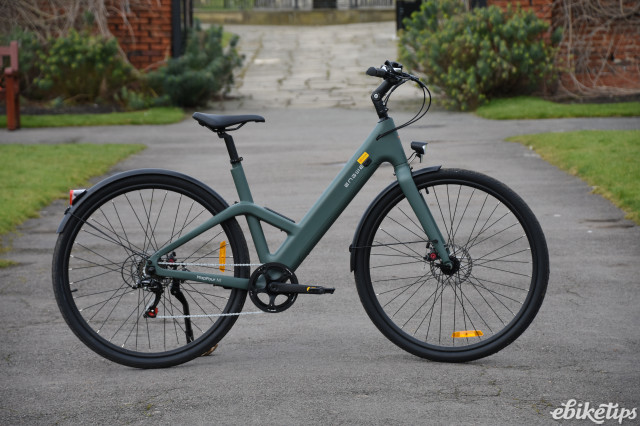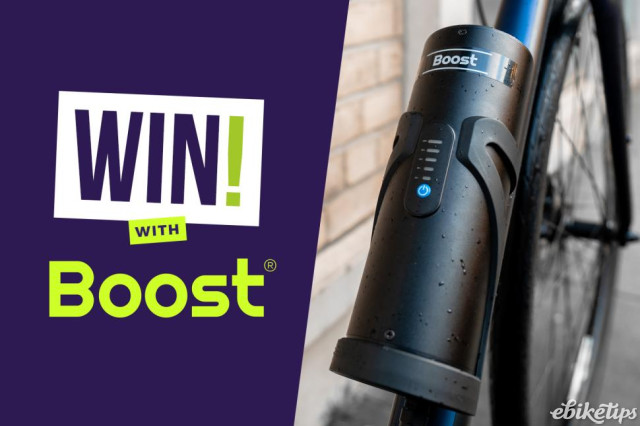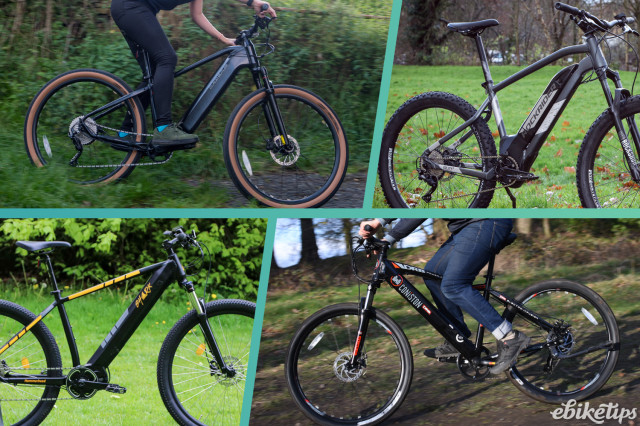Review: Carrera Vengeance E

Overview
- Great value for a torque-sensing model
- Smooth power assist
- Fast for cross-country riding
- Hub motor not as powerful as some
- A lower bottom gear might give its hillclimbing credentials a boost
Carrera is Halford’s own bike brand, and this e-bike incarnation of its Vulcan mountain bike features the Suntour HESC power assist system – yep, that’s the same Suntour that makes suspension forks. The most eye-catching aspect is arguably the sub £1000 price tag, as there are very few e-mtbs at this price point that would be as capable as the Vengeance E.
Buy the Vengeance E here
Indeed, many so-called e-mtbs around this price point are clearly designed by people who have never been near actual trail riding - this clearly isn’t the case with this bike. The initial signs for the Vengeance E are good, especially as the motor system boasts torque sensing, a feature usually only found on more expensive e-bikes. But does the spec and performance live up to the promising start?
The Vengeance E uses the same alloy frame as the (non-assisted) Carrera Vulcan mountain bike, which looks nicely proportioned and has strong-looking welding reinforced with gussets - it’s rated to carry a 160kg rider, which is pretty generous.
Everything else is built to a price point, as you would expect on a sub-£1000 e-mtb. There are 9 Shimano Altus gears (a 12-23t cassette driven by a 32t chainring giving a 280% gear range), Tektro mechanical disc brakes and Kenda K1027 knobbly tyres on 27.5” double-walled rims. The alloy bars are nice and wide for close control.
HESC (Human Energy Synergy Concept) is a hub motor system with the torque-sensing gubbins found in a black disc that sits unobtrusively inside the chainwheel. Torque sensing is generally a big positive; it usually means power is delivered more smoothly and in direct response to your pedal effort, for a more natural ride. It’s more efficient, too, meaning greater range from your battery. The alternative system on many sub-£1000 e-bikes is a motion-sensing ring of magnets usually found around the axle end of the crank arm and, whilst it keeps the cost down, it can produce power surges when you are not expecting them. Motion-sensing can be quite inefficient, and reduce battery range too.
The torque sensing on the Vengeance-E is not of the usual bottom bracket substitute type, but appears to be Suntour’s own design. According to Suntour's literature it features cams, magnets and hall sensors, but no more info is really available. In practice though, it worked well.
So, the torque sensing is definitely good news and it’s used to deliver power to quite a large looking rear hub motor, though this hasn’t meant an unduly heavy e-bike; I weighed the Vengeance E at 22.6kg which is quite respectable for a budget hardtail e-mtb. The motor can be disconnected for easy removal of the rear wheel in the case of a puncture, but you should take spare cable ties on the trail for refixing the power lead to the frame.
The battery is on the small side by today’s standards at 317Wh, but big enough for leisure users doing half a day’s riding. The display is basic with a speed-only 70s style red LED display, three power levels, battery capacity indicator and no walk assist. The capacity indicator is impressive; unlike crude ones that measure voltage and tend to jump up and down as you pedal then back off, the Vengeance-E capacity meter’s bars disappear in proportion to the actual power consumed.
The HESC system first appeared about 2011 as a front hub system but was never really widely adopted, no doubt because it’s launch coincided with Bosch’s mid-drive launch which revolutionised the e-bike scene and also because the huge motor manufacturer Bafang had already been developing very cost effective (but not as sophisticated) hub motors for quite a while. Despite that HESC offers a lot of technology for the money and generally gives an impressive riding experience.
The first day’s test ride was a short 15 mile trip but involving some really serious gradients around the South Pennines mountain biking mecca of Hebden Bridge. Arguably this is not the Vengeance E’s natural territory as it is made for something just a little less challenging; this area of the Calder Valley features some of the steepest gradients in the country.
Slowly climbing out of Hebden Bridge up Colden Clough with fresh legs was easily accomplished in the bottom Eco setting and maximum power was only needed occasionally on much steeper, rockier sections. I designed the test route to avoid the very steepest climbs, like the famed Buttress cobbles that rise vertiginously from the back of the town.
The motor is quiet in lower settings, and best of all the power kicks in smoothly and almost immediately when you pedal, giving it the feel of a pricier bike. On flat and downhill sections with the power turned off it’s no slouch, as the freewheel in the motor does its job and lets you pedal with no assist without that ‘treacly’ feeling that some motors give without power.
The three power levels feel quite closely graduated, with eco providing a meaningful level of assist. The max torque rating of 50Nm of the motor looks a little ambitious; up really steep off-road inclines the pleasant sounding hum from the motor becomes more of an odd warbling groan, but I was deliberately taking the bike to its limits.
The Vengeance E comes into its own for moderately challenging cross-country type riding. The motor gearing seems designed to speed you along very easily, and the smooth delivery encourages you to ride it just like a normal bike, with none of the compensations you might have to make for an e-bike with a cruder motion sensor. In short it makes you just want to get out there and have fun. Forestry trails and wider, less extreme bridleway riding would be the Vengeance E’s natural home, and it will easily tackle all but the most challenging of gradients.
The non-electric elements performed well. The 18” size frame suited my 5’8” frame comfortably and handled just as you would expect a decent hardtail to. There are also 16” and 20” frame options and a 14” women's model, as well as a youth version for 14 years and up. The Suntour XCT30-DS front suspension was probably the most disappointing part of the spec, but all e-mtbs at this price point are likely to feature a pretty crude coil-sprung fork like this, which is really just there to take the sting out of bigger bumps.
The Altus gears are budget spec but up to the job, though it would be interesting to see whether a much lower bottom gear would transform the bike’s climbing abilities up really steep gradients. I also thought the close-ratio cassette is an odd choice.
As ever, the range of the battery depends. My test rides indicated around 20-30 miles on some of the easier tracks around Hebden Bridge using power levels one and two with the occasional stretch of max power. On a subsequent ride on railway paths and a few moderate hills, I managed 21 miles before the first capacity light of three on the handlebar display went out, so 50-60 miles looks entirely possible in such benign conditions. I switched the power off much of the time on the flat and only put it on level one for inclines and headwinds. It’s not every e-mtb you’d want to ride quite a few miles on without power, so that’s another plus point for the Vengeance E.
Recharging the battery from empty takes about four hours: par for the course, but the connector into the battery itself was mighty fiddly and does look a bit of a weak point.
Any e-mtb at this price is going to come with some compromises. E-mtbs with a good mid-motor from one of the big names like Bosch or Yamaha start around £1600, but £2000 is a more common benchmark. If you can afford the extra money it will most probably be worth it, especially if you want to tackle more demanding terrain, but for those on a budget the Vengeance E should definitely be on your shortlist. If you can live without the lack of absolute raw power compared to mid-drives, this is an impressive e-bike.
Whilst you won’t want to be doing any big drop-offs on the Vengeance E or taking it on hardcore rocky climbs, I think it's great intro to leisure-style mountain biking. Don’t take that as a tame endorsement though, as it’s no slouch on the trails thanks to its decent geometry and the fact it’s not too difficult to pedal without the motor - that can’t be said of many e-mtbs at this price.
If you want a bigger battery the Carrera Vulcan-E has a 417Wh battery and some upgraded components such as hydraulic disc brakes though comes with a £400+ premium on top of the Vengeance-E price.
halfords.com
1 comments
Great bike for the price. I got one because it was on the cycle to work scheme and I needed a new MTB. I was really surprised how fun and capabale it is for the price point. But our electric Vulcan is much nicer (also managed to get that on cycle to work scheme too!) of course there are many fantastic ebikes and these are at the cheap end of the scale but they're still a lot of fun. I've had the Vengeance for 2 years now and it still performs as good as it did the day I bought it.

















